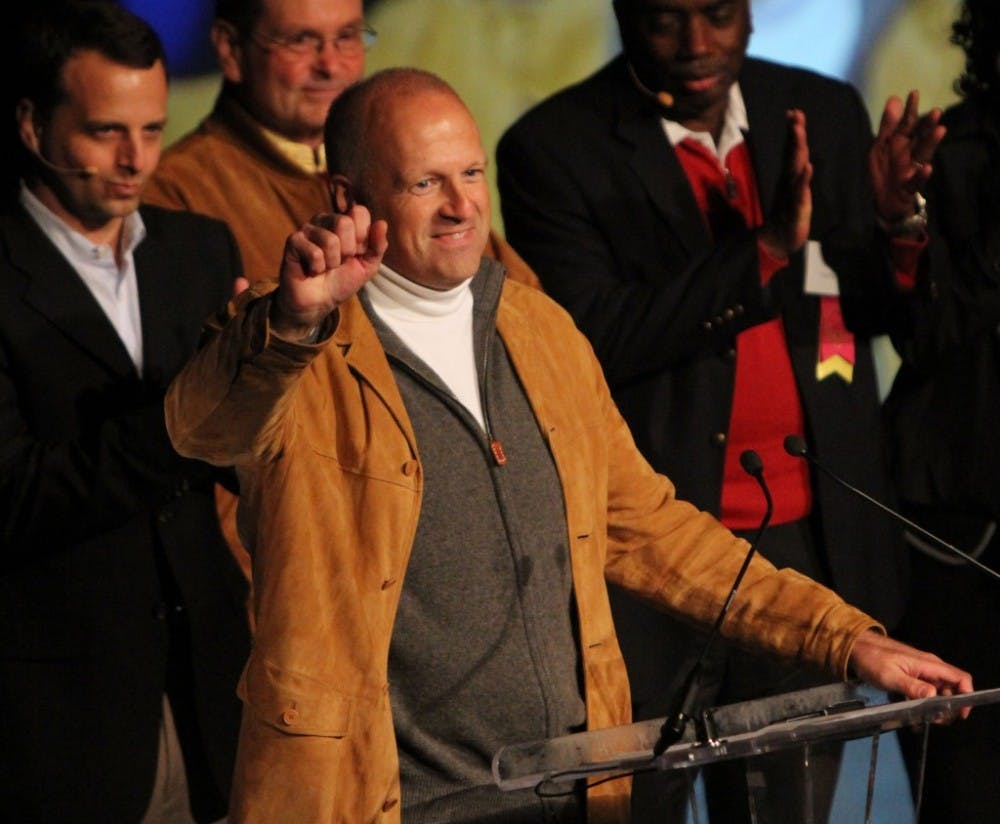The Ever Elon campaign is completed, but its impact is still growing.
After five and a half years, the Ever Elon campaign ended with a total of $107,333,426 and has begun in the final stages of its construction with the recent building of the new Multi-Faith Center, the Numen-Lumen Pavilion.
“It is not about the money, but what the money does for us,” said Jim Piatt, vice president for university advancement.
With these earnings, the campaign members plan on using the money to provide scholarships, support engaged learning and help develop the campus. Much of the campaign was focused on receiving endowment to help the finance the building of Lindner Hall and the Numen Lumen Multi-Faith Center, which is estimated to be completed in early 2013. The total amount earned from endowments was about half of the funds collected. The completion of Academic Village cost a total of $4 million and the Multi-Faith Center will be $2.16 million.
Piatt oversaw all the operations of the campaign and worked closely with President Leo Lambert and the Board of Trustees.
The Ever Elon campaign aimed to raise $100 million by the end of 2011. The initial phases began June 1, 2006, but the actual launch was not publicized until Oct. 11, 2008. The campaign earned its money by encouraging alumni, parents, faculty and staff and friends to donate.
Chuck Davis, assistant vice president for university advancement, was in charge of the campaign, the largest in university history.
“The focus was building university endowment while promoting excellence,” Davis said.
The majority of Ever Elon stayed on track with its plan from the beginning, but through the course of the campaign, numerous projects were added, such as the new golf course center, the new Student Professional Development Center in Moseley Center and the renovation of Alumni Gym, he said.
“Elon is always a growing and changing and aspiring place,” Davis said.
The results of the campaign also enabled the development of new scholarships, specifically more for need-based financial aid and study abroad. A little more than one-quarter of the total has been set aside for both need based and merit scholarships, and $2,356,558 has been donated for international study scholarships. More than 240 new scholarships were created with the money donated to the campaign.
Piatt said he believes most people don’t realize how much of the campaign contributes to scholarships.
“It really makes a difference to those students,” he said.
Davis spent much of the campaign talking with people and donors about planned gifts and annual funding, such as estate plans and donations in their wills. Nevertheless, students were at the heart of the campaign, he said.
“Student support was the lion’s head of the campaign” said Davis. “Students’ needs will never go away.”
While this campaign will be used to advance the university, Davis knows that the need for endowment and donations will never be finished.
“We are continuing to create an environment of excellence,” said Piatt. “Students want and deserve excellence.”
All of the projects initially planned in the beginning of the campaign are currently completed or in development.


